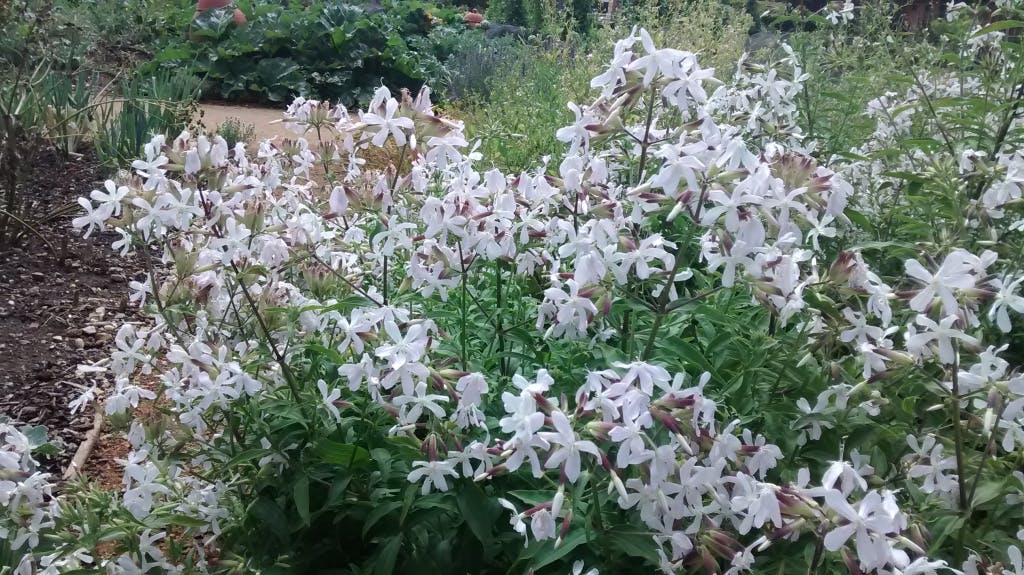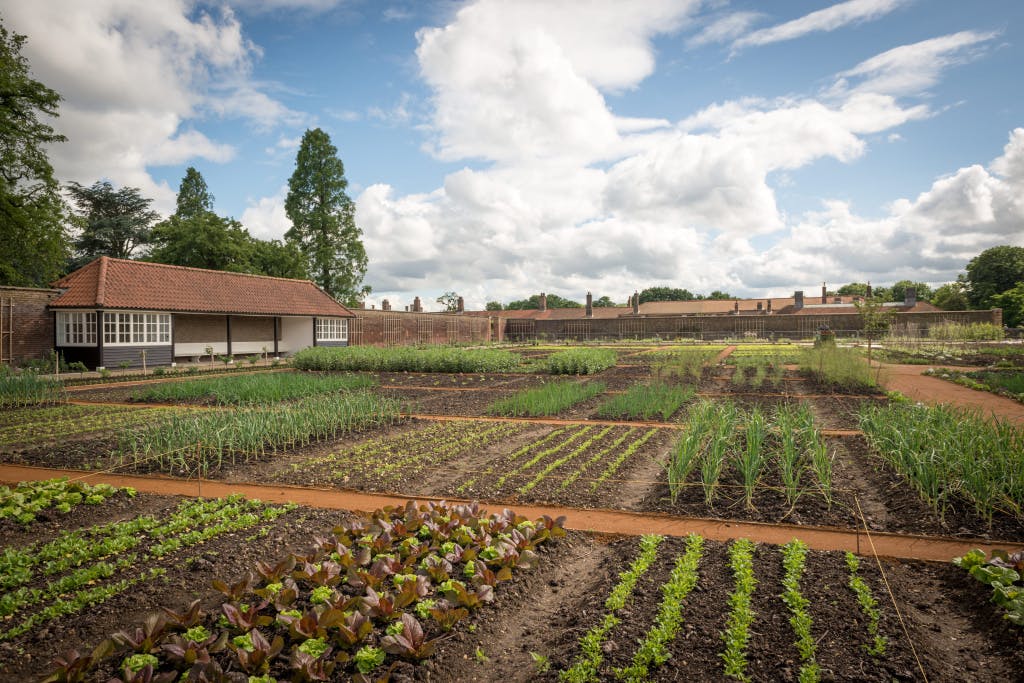Herbs through history: from the Tudors to today
Date: 29 July 2019
Author:
Hilary Theaker
This content is hosted on YouTube
This content may be using cookies and other technologies for which we need your consent before loading. To view the content, you need to enable cookies for "Targeting Cookies & Other Technologies".
Manage CookiesCentral to the Kitchen Garden at Hampton Court is its collection of herbs, and they are looking at their best in the summer. While many of them are familiar, some unusual ones have had some fascinating uses throughout history.
One of the most eye-catching herbs in the garden right now is the elecampane - an enormous herb, over two metres tall, with bright yellow flowers, that has had a place in medicine and myth for thousands of years. Since the Middle Ages, the roots have been sweetened and used to treat respiratory complaints.
Image: Elecampane growing in the Kitchen Garden. © Historic Royal Palaces

Just as the wonderfully scented lavender around the gardens borders has finished flowering, the hyssop that lines the pathways is producing a display of dark blue flowers that are popular with the bees. Although hyssop can be used in cooking, in Tudor times it would have been used along with other herbs such as tansy, rue and sweet maudlin, to strew across the floors. This would help keep insects away, and mask unpleasant smells.
Image: Hyssop in the Kitchen Garden. © Historic Royal Palaces

Sage is one of the most familiar herbs in the kitchen garden, with a variety of cultivars edging the vegetable beds. It is a hardy evergreen perennial, with a strong flavour and rich, woody, savoury smell. Like many herbs, it grows best in a well-drained light soil and sunny position, and should be cut back after flowering, and again in the spring. A great reference for historical gardening is John Evelyn's 'A discourse of sallets', written in 1699, which describes sage as "a plant endu'd with so many wonderful properties as that the assiduous use of it is said to render men immortal", and perhaps more sensibly, to put a small amount of the flowers or young leaves into a cold salad.
These are just a few examples of the interesting stories behind some of the herbs, but walking through the garden right now - with its rows of different coloured basil, tall spires of elecampane and lovage, and drifts of white-flowering soapwort, marshmallow, sculpit and thyme it is clear that as well as being useful, they are also exceptionally beautiful plants.
Hilary Theaker
Kitchen Garden Keeper
More from our blog

Mistletoe in the Hampton Court Palace Gardens
20 December 2019
One of the most popular questions posed to our gardeners during winter concerns strange lumps of weed growing in trees in the East Front garden. These random and odd-looking growths are in fact clumps of mistletoe.

A tour of Kew's Kitchen Garden
10 September 2019
Like Kew Palace and the Royal Kitchens, the Kitchen Garden is open seasonally to visitors, from April to October. But work in the garden continues all year round. Let's take a tour...

Dahlia season at Hampton Court Palace
14 August 2019
July marks the start of the dahlia season, but it is as the days grow shorter that these flamboyant plants come into their own, providing a spectacular display of extravagant flowers until the first frosts.



